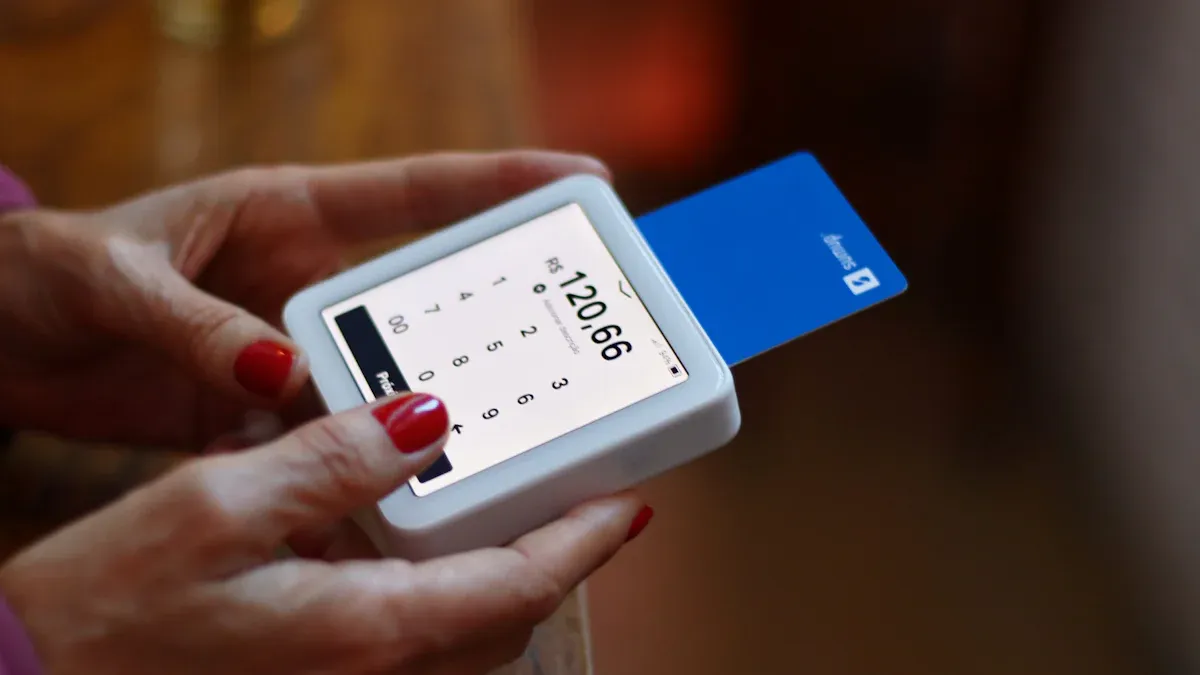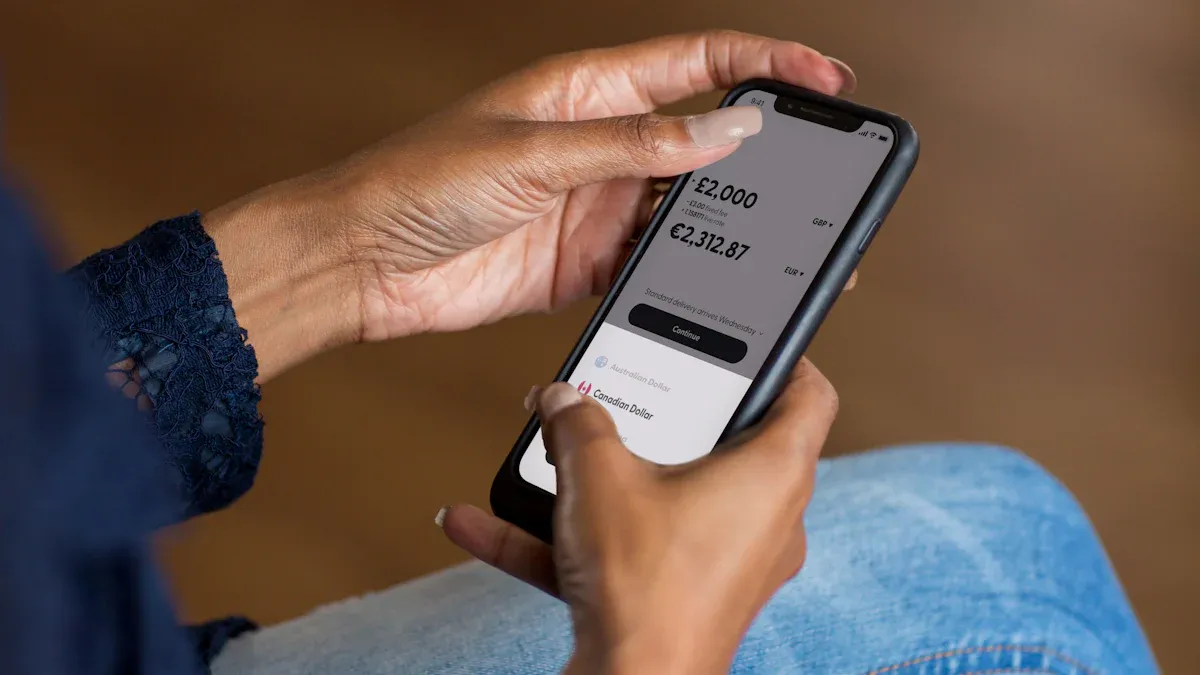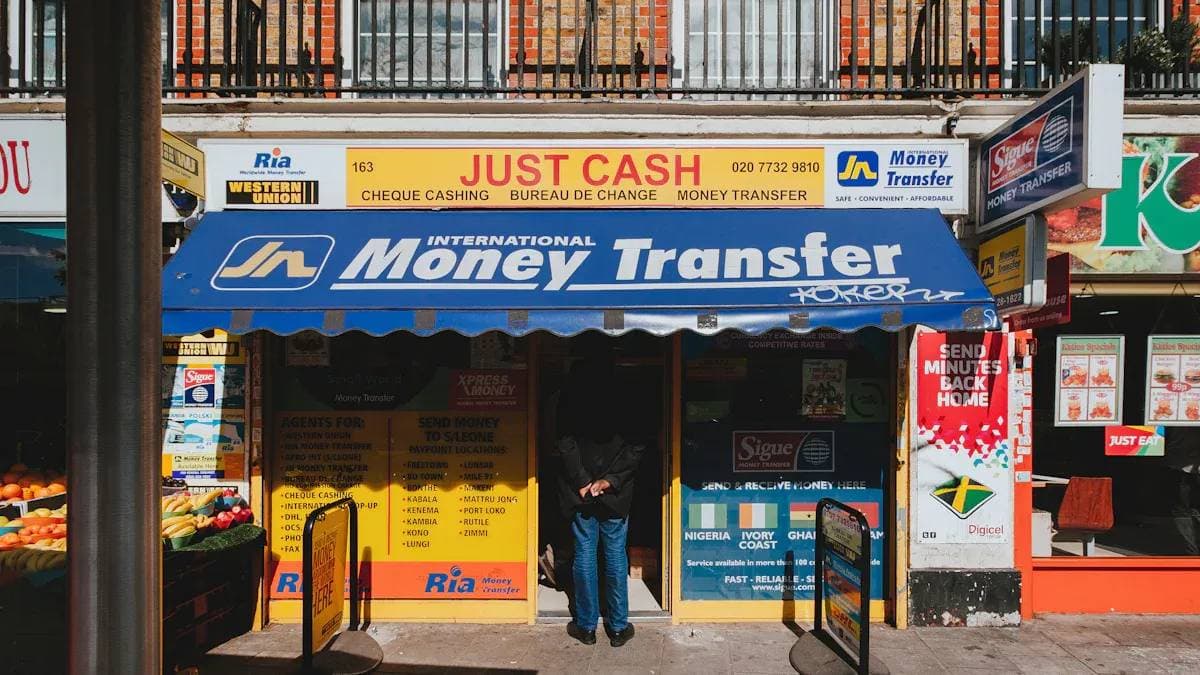- EasyCard
- Trade
- Help
- Announcement
- Academy
- SWIFT Code
- Iban Number
- Referral
- Customer Service
- Blog
- Creator
Does MoneyGram Accept Credit Cards? Usage Guide and Fee Analysis

Image Source: unsplash
In an emergency, you might consider using a credit card for MoneyGram remittances. This seems like a quick option.
But have you thought: Does MoneyGram accept credit card payments? Even if it does, what is the real cost of this transaction? Is this truly a wise financial decision?
Core Points
- MoneyGram accepts credit cards for online payments, but only Visa and Mastercard.
- Remitting with a credit card is very expensive because it is counted as a “cash advance,” incurring additional fees and high interest.
- Cash advance interest on credit cards starts calculating from the transaction day with no grace period.
- To save money, it is best to use a debit card or direct bank account transfer to pay for MoneyGram.
- Unless in an emergency, do not remit with a credit card as it increases your costs and may affect your credit score.
Does MoneyGram Accept Credit Cards? Answer and Conditions
The answer is yes, but with important conditions. Simply put, MoneyGram accepts credit cards as one of its online payment methods. However, you need to clearly understand its specific rules and scope to avoid surprises during remittance.
Official Payment Options Explanation
When remitting through MoneyGram’s official website or mobile app, you will see the following main payment options:
- Credit Card (Visa, Mastercard)
- Debit Card (Visa, Mastercard)
This choice provides flexibility for online operations. However, there is a huge difference between online and offline payment rules.
Important Tip: Online vs. Offline Difference
You need to note that credit card payments are usually limited to online platforms. If you go to a MoneyGram offline agent location (such as a bank or partner convenience store) to handle business, the situation is completely different. Most offline agent locations only accept cash payments, some locations may accept debit cards, but almost none accept credit cards. Therefore, it is best to prepare sufficient cash before heading out.
Supported Credit Card Types
Before deciding to remit with a credit card, confirm whether your card type is supported. Currently, MoneyGram’s online platform mainly accepts cards from two major credit card networks:
- Visa
- Mastercard
This means that if you hold an American Express or Discover card, you cannot complete payment through MoneyGram’s online channels. Therefore, when planning to have MoneyGram accept credit card payments, be sure to check the logo on your card. This small detail determines whether your transaction can proceed smoothly. In summary, although MoneyGram accepts credit cards, it is limited to specific card types and online channels.
Credit Card Remittance Operation Guide

Image Source: unsplash
After understanding that MoneyGram accepts credit card payments, the next step is to master the specific operation process. Remitting with a credit card via MoneyGram’s official website or mobile app is very straightforward. You only need to follow these simple steps to complete the transaction.
Register and Log In to Account
Before starting the remittance, you first need a MoneyGram account.
- If you are a new user: You need to download the MoneyGram mobile app and click “Register”. When creating an account, prepare to provide some basic personal information, such as:
- Your full name
- Residential address
- Phone number
- Date of birth
- Social Security Number (SSN) or Individual Taxpayer Identification Number (ITIN)
- If you already have an account: Log in directly to start the remittance process.
Fill in Remittance Information
After logging in, you need to accurately fill in the key remittance information. This includes the recipient’s full name, the country they are in, and the specific amount you wish to send. You also need to choose the receiving method, such as bank deposit or cash pickup.
Select Credit Card Payment
In the payment section, you will see multiple payment options. At this point, simply select “Credit Card” from the payment method list. This option clearly indicates that MoneyGram accepts credit card payments.
Enter Card Details
After selecting credit card payment, the system will require you to enter card information. You need to accurately fill in your Visa or Mastercard number, expiration date, and the security code (CVV) on the back of the card.
Review and Confirm Transaction
This is the most critical step. Before final confirmation, the system will display a complete transaction summary page.
Be sure to check carefully!
This page will clearly list the remittance amount, MoneyGram’s processing fee, and the total amount you need to pay (for example, remit $500.00 USD + processing fee $4.99 USD = total $504.99 USD). What is shown here is only MoneyGram’s processing fee. You can use the official website’s fee estimation tool to check in advance and be prepared.
After confirming all information is correct, click submit, and your remittance operation is complete.
Real Cost Breakdown of Credit Card Remittance
In the last step of the operation guide, you saw the processing fee charged by MoneyGram, but this is just the tip of the iceberg. The real cost of remitting with a credit card is far more than that. In fact, you will face a “triple cost” trap consisting of three parts: MoneyGram processing fee, credit card cash advance fee, and high cash advance interest.
MoneyGram Processing Fee
This is the most direct and transparent fee. After entering the remittance amount, the MoneyGram system will clearly tell you how much service fee you need to pay. This fee usually varies based on the remittance amount, destination, and receiving method. Although this fee is clearly visible, it is often the smallest part of the total cost.
Credit Card Cash Advance Fee
This is the second fee you will pay, and it is a very considerable amount.
What is a “Cash Advance”?
Since this transaction is classified as a cash advance, the bank will immediately charge you a fee. The charging standard for this fee is usually:
- Charged as a percentage of the transaction amount, typically between 3% to 5%.
- With a minimum charge threshold, generally $10 USD.
The bank will use the “higher of the two” principle. For example, a survey of 100 credit cards shows that the vast majority charge cash advance fees, with the most common standard being 5% of the transaction amount or $10 USD, whichever is higher. This means that even for a small remittance, you may need to pay a $10 USD fee.
Cash Advance Interest
This is the most hidden and most damaging cost. Unlike ordinary consumption, cash advance transactions trigger a completely different interest calculation rule.
First, the annual percentage rate (APR) for cash advances is much higher than for ordinary consumption. According to WalletHub data, the average APR for credit card cash advances is about 24.7%, while the APR for ordinary consumption may be much lower.
⚠️ Warning: Interest Starts Calculating from the Transaction Day
Cash advance transactions have no grace period. The moment you complete the remittance, interest starts accumulating. Many cardholders accustomed to interest-free repayment on the billing date will be surprised to find that this money generates high interest from day one until fully repaid.
Real Cost Calculation Example
Let’s look at the real cost of remitting $1,000 USD through a specific example.
Assumptions:
- MoneyGram Processing Fee: $4.99 USD
- Credit Card Cash Advance Fee: 5% (minimum $10 USD)
- Cash Advance Annual Rate (APR): 24.7%
- Repayment Time: You repay this amount after 30 days
Your total cost will consist of the following three parts:
| Fee Item | Calculation Method | Amount (USD) |
|---|---|---|
| 1. MoneyGram Processing Fee | Fixed fee | $4.99 |
| 2. Credit Card Cash Advance Fee | $1,000 USD × 5% | $50.00 |
| 3. Cash Advance Interest (30 days) | ($1,000 USD × 24.7% ÷ 365) × 30 | $20.30 |
| Total Additional Cost | Sum of three fees | $75.29 |
From the table above, you can clearly see that to remit $1,000 USD, you need to pay an additional up to $75.29 USD in fees, with an actual cost rate exceeding 7.5%! This number is far more shocking than the $4.99 USD processing fee you initially saw on the MoneyGram page.
Credit Card vs. Other Payment Methods Comparison

Image Source: unsplash
After understanding the astonishing cost of remitting with a credit card, a natural question is: How does it compare to other payment methods? Comparing credit cards side by side with other options can help you clearly see which method is best for your wallet.
Pros and Cons of Credit Cards
Despite the high cost, in certain specific situations, credit card payments do have their convenience.
- Advantages
- Convenient and Fast: You don’t need to check bank account balance; you can complete the remittance online anytime, anywhere.
- Fund Flexibility: When you urgently need money but your bank account is insufficient, a credit card provides a temporary funding source.
- Disadvantages
However, these limited advantages are overshadowed by its huge disadvantages:
- Extremely High Cost: You pay far more than just MoneyGram’s processing fee, including the bank’s cash advance fee and high interest starting from the transaction day.
- No Rewards or Cashback: Since this transaction is treated as a cash advance rather than ordinary consumption, you will not earn any credit card rewards.
- May Affect Credit Record: Large cash advances will quickly increase your credit utilization rate (used limit as a percentage of total limit). If this ratio exceeds 30%, your credit score may drop. Sustained high balances and interest also make repayment harder, increasing the risk of delinquency.
Better Payment Choices
To avoid high fees, you should prioritize the following two more economical payment methods:
- Debit Card
- Direct Bank Account Transfer
Using a debit card or bank account payment, you only pay MoneyGram’s service fee, completely avoiding cash advance fees and interest. The table below clearly shows the huge cost difference brought by payment methods (taking a $500 USD remittance as an example):
| Receiving Method | Debit Card Payment Fee | Credit Card Payment Fee |
|---|---|---|
| Bank Account | $8.99 USD | $20.49 USD |
| Cash Pickup | $68.99 USD | $83.49 USD |
As seen in the table, choosing a debit card can save you a significant amount. Direct bank account transfer (ACH) is usually the lowest-cost option, although funds may take about 3 business days to arrive.
Money-Saving Tip
You can also explore rates from different channels. For example, handling MoneyGram business through some bank channels in mainland China (such as China Postal Savings Bank’s mobile banking) may have more advantageous processing fees and exchange rates than operating directly on the MoneyGram official website.
In summary, unless you face an unavoidable emergency, using a debit card or bank account is always a wiser and more economical choice.
Now you have the final answer. Although technically MoneyGram accepts credit card payments, this is usually not a cost-effective financial choice. Your credit card company will treat this transaction as a “cash advance,” leading to multiple fees. Your total cost may include:
- A fixed transfer fee, such as $49.99 USD.
- An additional fee as a percentage of the transfer amount, about 2%.
- If you choose expedited service, there will be other fees.
Final Recommendation
To save money, you should always prioritize debit card or bank account transfers. Unless you face a no-choice emergency, please avoid using credit cards for remittances.
FAQ
What if my credit card transaction fails?
If your credit card payment fails, you should first check the following:
- Whether your card is Visa or Mastercard.
- Whether the card information you entered is completely correct.
- Whether your credit card limit is sufficient for payment.
- Contact your issuing bank to confirm if they blocked this transaction.
Will remitting with a credit card affect my credit score?
Yes, it may. This transaction will increase your credit utilization rate (used limit as a percentage of total limit). If the ratio is too high, your credit score may drop. Therefore, this is not an ideal choice.
Besides debit cards, are there other cheap payment methods?
Of course! The most economical method is usually direct bank account transfer.
Although this method’s arrival speed may be slower than card payments (usually taking a few business days), it has the lowest processing fee and saves you the most money.
Can I use a credit card to pay MoneyGram for someone else?
No. MoneyGram requires the payment account holder’s name to exactly match the remitter’s name. You can only use a credit card in your own name for remittance, not your card to pay for others. This is to comply with anti-money laundering regulations and ensure transaction security.
*This article is provided for general information purposes and does not constitute legal, tax or other professional advice from BiyaPay or its subsidiaries and its affiliates, and it is not intended as a substitute for obtaining advice from a financial advisor or any other professional.
We make no representations, warranties or warranties, express or implied, as to the accuracy, completeness or timeliness of the contents of this publication.




Contact Us
Company and Team
BiyaPay Products
Customer Services
is a broker-dealer registered with the U.S. Securities and Exchange Commission (SEC) (No.: 802-127417), member of the Financial Industry Regulatory Authority (FINRA) (CRD: 325027), member of the Securities Investor Protection Corporation (SIPC), and regulated by FINRA and SEC.
registered with the US Financial Crimes Enforcement Network (FinCEN), as a Money Services Business (MSB), registration number: 31000218637349, and regulated by FinCEN.
registered as Financial Service Provider (FSP number: FSP1007221) in New Zealand, and is a member of the Financial Dispute Resolution Scheme, a New Zealand independent dispute resolution service provider.



















